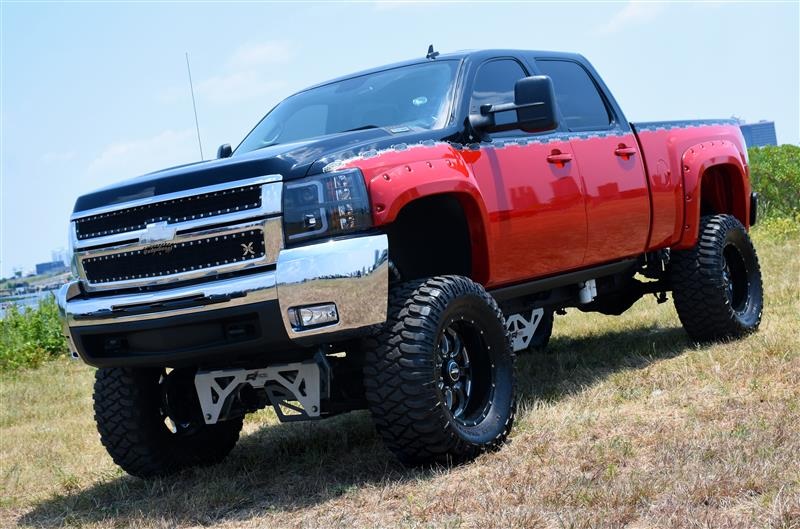
History/General Info
The 2007 model year marked significant changes across the GM truck lineup. With the all-new Chevrolet Silverado and GMC Sierra 1500 (1/2-ton) models already introduced for 2007, the all-new Heavy-Duty version of the GM trucks were released roughly mid-model year (often referred to as a 2007.5). These new 2500HD/3500HD trucks rode on the GMT910 platform and featured bold new exterior styling. In addition, a redesigned and more modern interior was incorporated, along with an updated version of the 6.6L diesel, the Duramax LMM.
The new Duramax LMM engine was largely identical to the LBZ engine it replaced but was updated to meet Federal emission standards that went into effect in 2007. This required the integration of an exhaust after-treatment system, known as a diesel particulate filter (DPF). To help accomplish this and meet the new emissions requirements a larger EGR cooler and an intake airflow valve were also incorporated. This system provided a 90-percent reduction in particulate matter and a 50-percent reduction in NOx.[1] Despite more stringent emission controls, the LMM still managed to offer an increase of 5 horsepower and 10 pound-feet of torque compared to its predecessor.
Diesel Particulate Filter (DPF)
The diesel particulate filter (DPF) is located downstream from the diesel oxidation catalyst (DOC). The DPF is designed to trap diesel particulate matter in a honeycomb-like ceramic “brick” after it travels through the oxidizing catalyst. To ensure optimal performance, the system must undergo periodic “regeneration” to release accumulated soot from the filter. The regeneration process uses heat to burn off the soot and, in most cases, is performed automatically. An onboard computer was utilized to control fuel injection and oxygen content to adjust the exhaust energy to the appropriate level to clean the particulate trap, . In spite of this, periodic servicing of the filter is required to remove accumulated ash.
DPF Regeneration
There are two forms of regeneration: active and passive. Passive regeneration occurs when the engine is producing sufficient heat to keep particulate matter low, such as heavy towing or hauling. During active regeneration (often required on trucks that idle a lot or are not worked as hard), the ECM calls for fuel to be injected during the engine’s exhaust stroke. This extra fuel is used to increase exhaust gas temperature in both the DOC and DPF to more than 1,000 degrees F to burn off the soot in the DPF.
Emissions Equipment
To meet the EPA’s new particulate matter standard, NOx emissions had to be reduced by 50 percent[1]. This meant more exhaust gas recirculation (EGR) would be needed on the LMM, so a larger EGR cooler was incorporated for increased cooling capacity. Furthermore, engineers decided maintaining sufficient heat in the engine would be needed to meet particulate matter emission standards.
2007.5-2010 GM 6.6L Duramax LMM
Although many people simply consider the LMM diesel engine as an LBZ with added emissions control equipment, there were some minor changes. The LMM retained its predecessor’s basic engine block architecture such as the added webbing in the areas of the main bearings and taller main bearing caps with a 4mm deeper bore for the cap bolts.[2] The larger forged connecting rods and cast-aluminum piston design from the LBZ were carried over as well. The cylinder heads were also similar to the LBZ, but the coolant passages were redesigned. This helped to optimize cooling and handle the extra heat caused by the new emissions control equipment.
The tried-and-true Bosch CP3 common rail fuel pump and 26,000 psi injectors were carried over except for a slight change to the fuel injectors. The injectors were updated with a new six-hole design with a revised spray angle, as opposed to the previous seven-hole nozzle.[3] This further optimized the spray pattern and injected fuel directly over the center of the piston. In addition, the LMM continued to use the Garrett GT3877VA turbocharger. This turbocharger was high-speed-balanced for minimal noise and vibration, while contributing to the engine’s overall smoothness and refinement. It was capable of spinning up to approximately 120,000 rpm, while developing a maximum boost pressure of 20 psi.
Transmissions
A manual transmission was no longer available as the market started to favor automatic transmissions. Beginning in 2007.5 the Duramax was only offered with the Allison 1000 six-speed automatic transmission in the Silverado/Sierra HD. Express/Savana vans came equipped with a 4L85E due to packaging and size restraints.
Silverado/Sierra 2500HD/3500HD
For 2007.5, the new 2500HD and 3500HD pickups were offered in three trim levels with two interiors, three cab styles, and three box lengths, plus a choice of five different wheelbases and two different powertrains. Standard was a 353-hp, 6.0-liter Vortec gas engine making a class-leading 373 pounds-feet of torque and driving through a new Hydra-Matic 6L90E six-speed automatic transmission. Optional was the more powerful Duramax diesel featuring a segment-leading 365 hp and 660 pounds-feet of torque.
The W/T and LT models offered a functional pickup interior design theme, while the LTZ model upgraded to a more premium interior with a large center console and bucket seats. In addition, a touch-screen DVD-based navigation radio system was available for the first time in the more upscale LTZ model. All HD models were available with an integrated trailer brake controller, and maximum towing capabilities were a segment-best 13,000 pounds with conventional trailers and 16,700 pounds with fifth-wheel hitches.
Frame/Suspension
The frame on the Heavy-Duty trucks consisted of lipped C-section rails for the mid-section that were roll-formed and draw-bent during manufacturing. A new Hydroformed front section was incorporated for increased strength. An independent short/long arm (SLA) front suspension with a torsion bar connecting the lower control arms to a cross member on the frame, as used in previous generations, was carried over. Trucks equipped with 4WD utilized an AAM 9.25″ differential up front. The rear suspension consisted of a tried-and-true solid axle with leaf springs. Gas powered trucks came equipped with the AAM 10.5″ rear, while diesel powered trucks got the upgraded AAM 11.5″ differential.
Express/Savana
The LMM was offered as an option in the Chevrolet Express and GMC Savana 2500/3500 vans. As in the previous generation, the vans featured a slightly de-tuned version of the Duramax with 250 horsepower and 460 lb.-ft. of torque. As noted earlier, Duramax equipped vans came equipped with the less stout GM 4L85E 4-speed automatic transmission.
One Millionth Duramax
In April of 2007, GM produced its one millionth Duramax which happened to be an early production LMM. Engine number 1,000,000 was put on display at DMAX Ltd. headquarters upon final assembly.
LMM Issues
Although the 6.6L Duramax LMM is generally a reliable engine although it can suffer from issues such as EGR coolers getting plugged or leaking, fuel injector problems, and turbocharger failure. It is important to keep an eye on these components and address any potential problems before they become costly repairs. Listed below are some of the more common problems associated with the LMM.
1. DPF Failure
The active regeneration process typically required the vehicle to be at a speed above 30 mph until the process has completed and took about 30 minutes. Not meeting both requirements could lead to a number of incomplete cycles. This could result in the filter becoming clogged or failing altogether.
2. Leaking Transmission Lines
The transmission cooling lines are known to leak as a result of a poor crimp design. If you see transmission fluid drops on the ground, replacing the coolant lines is in order. Generally, it occurs when the vehicle is cold and typically starts with an occasional drip.
3. Cracked Pistons
Like the LBZ, the LMM pistons are prone to cracking along the center line of the wrist pin, especially when the power level is increased. For owners of stock trucks or lightly modified trucks it is typically a non-issue, as it usually will not be a problem until around the 600hp mark.
4. Low Fuel Rail Pressure (P0087)
Low fuel rail pressure codes and reduced engine power can be an issue although they are not overly common. This is most common during summer months when the weather is hot and mainly if you are towing very heavy loads with a higher-mileage truck.
If you get a P0087 code and reduced power output, the problem can be either the fuel injectors or the fuel injection pump itself. Both parts are prone to normal wear and tear over time, which can reduce fuel rail pressure. In addition, as the fuel system ages the fuel injectors can get clogged or the fuel pump can weaken. One Way to help eliminate low fuel rail pressure codes is by replacing the stock pressure relief valve with a Race Fuel Valve, also known as a rail cap, plug, or rail blocker. This valve is designed to help maintain fuel rail pressure during high engine load conditions.
What To Look For When Purchasing
When purchasing a GM 6.6L Duramax LMM engine, it is important to look for any signs of abuse or neglect. Look over the engine and check for leaks, as well as any other mechanical issues that may need attention. In addition, pay particular attention to the EGR system, fuel injectors, and turbocharger as these are common points of failure on this engine. Obtaining maintenance records for work performed on the engine or truck can be extremely valuable. Proper maintenance can help ensure that this engine performs reliably for many years to come. Furthermore, as with any older pickup truck rust can be an issue depending on what region you live in.
Pros/Cons
Pros:
- Reliable & Durable Engine
- Impressive Horsepower & Torque Ratings
- Modern Amenities Available On LTZ Models
Cons:
- Fuel Economy
- Diesel Particulate Filter (DPF) Failure
- Weak Pistons (In Performance Applications)
Review
The 2007.5-2010 Chevrolet Silverado & GMC Sierra 2500HD/3500HD pickup trucks are an excellent choice for someone looking to purchase a diesel truck but wants something a little more modern. The Duramax LMM is a durable engine that can be upgraded with aftermarket parts to increase performance and reliability. The LMM can typically handle up to approximately 600 horsepower, before issues with the stock pistons can arise.
Popular Aftermarket Upgrades:
The GM 6.6L Duramax LMM is a popular platform to upgrade with aftermarket parts. Popular upgrades include programmers/tuners, exhaust systems, air intake systems, and more. The following list of modifications can help increase the power, improve fuel economy, as well as upgrade the reliability of your diesel-powered Silverado/Sierra.
1. Programmer/Tuner
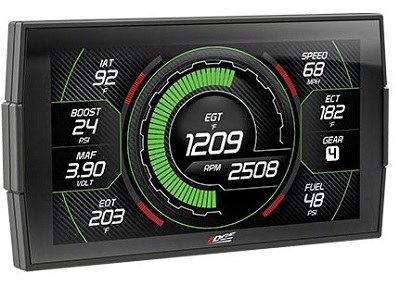
A programmer or tuner is used to reprogram the engine’s computer for improved performance. This can help increase horsepower and torque, as well as improve fuel economy.
2. Exhaust System
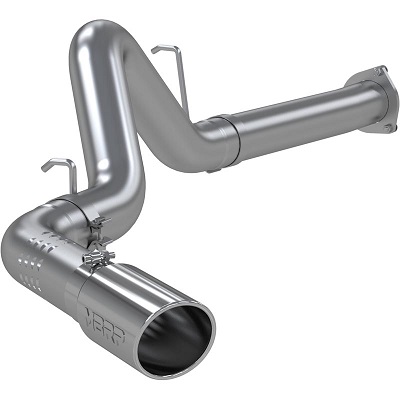
An filter-back exhaust system is a popular upgrade and can also enhance the styling of your truck with a wide selection of tips to choose from.
3. Air Intake System
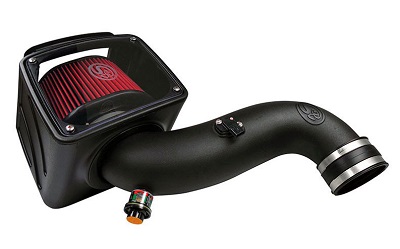
An air intake system (or cold air kit as they are also referred to) can help reduce air turbulence and increase airflow, resulting in increased power and efficiency. Hence the reason cold air kits are so popular on all vehicles.
4. Transmission Lines
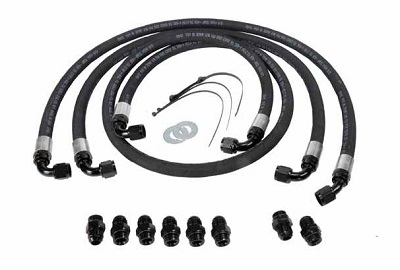
The cooling lines on the Allison transmission can be failure-prone and often leak at the crimp. It typically occurs when the truck is cold and begins with an occasional drip. Installing upgraded transmission cooling lines is a long-term solution to the poor factory crimp.
5. Lift Pump
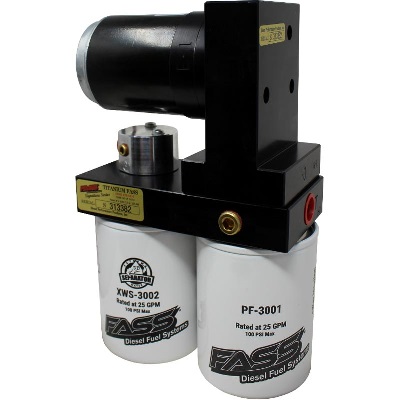
A lift pump can help increase fuel delivery to the engine, resulting in increased power and torque. It also provides a more consistent supply of fuel and can help improve the reliability of your fuel system components.
6. Crankshaft Dowel Pin Kit
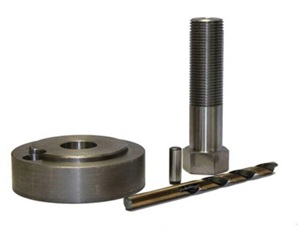
Eliminate factory dowel pin failures and make sure your balancer stays in place. If the balancer spins, it can throw off the engine balance and create harsh vibrations. Continued operation in these conditions can result in serious engine damage. A crankshaft pin kit is cheap insurance to help protect your Duramax.
7. Upgraded Tie Rods
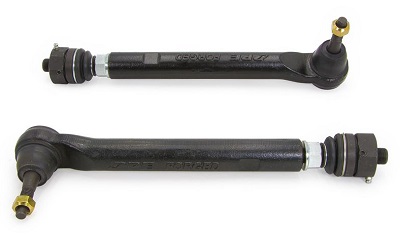
The factory tie rods on the 2500HD/3500HD trucks were notoriously weak and can be prone to failure. Upgrade your tie rods with heavy-duty tie rods for peace of mind.
8. Turbo Inlet/Intake Manifold
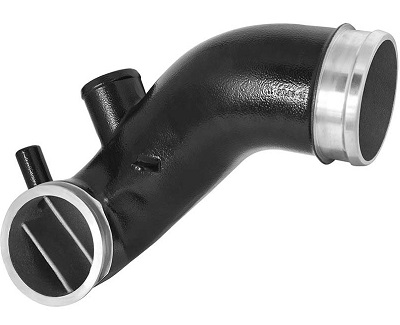
Upgrading the intake manifold can help reduce air turbulence and increase airflow, resulting in increased power and efficiency.
9. Race Fuel Valve
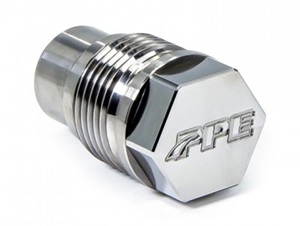
The PPE 113073000 Race Fuel Valve replaces the stock pressure relief valve. This can help eliminate potential low fuel rail pressure DTC codes P1093 or P0087 (low fuel rail pressure during power enrichment) that are caused by insufficient spring pressure. This leads to the valve opening too early which causes excessive amounts of fuel to be returned to the tank.
10. Drivers Side High-Flow Exhaust Manifold
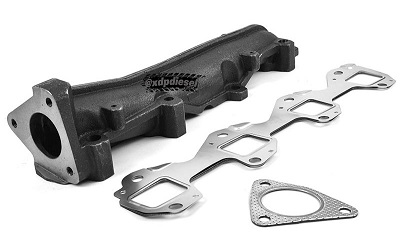
A driver’s side high-flow exhaust manifold can help reduce backpressure and increase exhaust flow.

2007.5-2010 GM 6.6L Duramax LMM Specifications
| Production Years: | 2007.5, 2008, 2009, 2010 |
| Model Availability: | Chevrolet Silverado 2500HD, 3500HD GMC Sierra 2500HD, 3500HD Chevrolet Express 2500, 3500, 4500 GMC Savana 2500, 3500, 4500 Chevrolet Kodiak C4500, C5500, C6500, C7500 GMC TopKick C4500, C5500, C6500, C7500 |
| VIN Code: | 6 (8th digit of VIN) |
| Common Names: | LMM, Duramax |
| Configuration: | V8 |
| Displacement: | 403 cubic inches, 6.6 liters |
| Bore: | 4.055″ (103 mm) |
| Stroke: | 3.897″ (99 mm) |
| Cylinder Heads: | Cast Aluminum Alloy |
| Engine Block: | Cast Iron |
| Firing Order: | 1-2-7-8-4-5-6-3 |
| Compression Ratio: | 16.8 : 1 |
| Pistons: | Cast Aluminum |
| Connecting Rods: | Fracture Split Forged Alloy Steel |
| Crankshaft: | Nitrided Forged Steel |
| Aspiration: | Turbocharged With Air-To-Air Intercooler |
| Minimum Cylinder Pressure: | 300 PSI (Minimum Compression Test Pressure) |
| Injection: | High-Pressure Common Rail / Direct Injection |
| Fuel Pump: | Bosch CP3 Injection Pump (CP3.3) |
| Fuel Injectors: | Piezo Electric Fuel Injectors (7-hole) |
| Max Fuel Injection Pressure: | 26,000 PSI |
| Turbocharger: | Garrett GT3788VA – Variable Vane Turbocharger (VVT) |
| Valvetrain: | OHV, 4 Valves Per Cylinder | |
| Idle Speed: | 680 RPM @ Operating Temperature | |
| Max Engine Speed: | 3,450 RPM (Electronically Governed) | |
| Weight: | Approx. 835 lbs (Dry) | |
| Oil Capacity: | 10 qts w/ Filter (9.46L) | |
| Horsepower: | Silverado/Sierra | 365 hp @ 3,200 rpm |
| Express/Savana | 250 hp @ 2,500 rpm | |
| Kodiak/Topkick (w/LRX power option) | 300 hp @ 3,000 rpm | |
| Kodiak/Topkick (w/LYE power option) | 330 hp @ 3,000 rpm | |
| Torque: | Silverado/Sierra | 660 lb-ft @ 1,600 rpm |
| Express/Savana | 460 lb-ft @ 1,600 rpm | |
| Kodiak/Topkick (w/LRX power option) | 520 lb-ft @ 1,600 rpm | |
| Kodiak/Topkick (w/LYE power option) | 620 lb-ft @ 1,600 rpm | |
| Battery: | Group Size 78 | |
| Transmissions: | Allison 1000 (6-Speed Automatic) | Silverado/Sierra |
| 4L80E/4L85E (4-Speed Automatic) | Express/Savana Vans |
Fluid Specifications & Capacities
| Engine Oil: | 15W-40 API CJ-4 or CK-4 | Preferred viscosity, ambient temp > 0° F | 10.0 qts Capacity w/ Oil Filter (9.46L) |
| 5W-40 API CJ-4 or CK-4 | Preferred viscosity, ambient temp < 0° F, acceptable in all temps | 10.0 qts Capacity w/ Oil Filter (9.46L) | |
| Engine Coolant: | 50/50 Dex-Cool Engine Coolant, Distilled Water | 24.6 – 25.4 quarts (6.15 – 6.35 gallons) Refer to owner’s manual for application specific coolant capacity | |
| Automatic Transmission Fluid: | Allison 1000 (6-Speed) | Dexron VI Automatic Trans Fluid | 7.4 qts service refill 12.7 qts total capacity |
| Transfer Case Fluid: | Dexron VI Automatic Trans Fluid | 1.6 qts | |
| Front Differential Fluid: | 9.25″ IFS (14 Bolt) | SAE 75W-90 | 1.8 qts |
| Rear Differential Fluid: | GM 10.5″ (14 Bolt) | SAE 75W-90 | 3.2 – 3.5 qts |
| AAM 11.5″ (14 Bolt) | SAE 75W-90 | 4.4 – 5.0 qts |
Maintenance Schedule
| Service Procedure | Interval |
| Replace Engine Oil & Filter: | 10,000 miles or when “change engine oil” message is displayed by the oil life monitoring system |
| Replace Fuel Filter/Drain Water Separator: | 15,000 miles |
| Replace Air Filter: | Check filter condition every oil change and replace as necessary; replace at 45,000 miles regardless |
| Flush Engine Cooling System: | 150,000 miles |
| Replace Automatic Transmission Fluid & Filter: | 50,000 miles (Normal Conditions) 25,000 miles (Severe Duty Conditions) |
| Replace Transfer Case Fluid: | 50,000 miles |
| Replace Front Differential Fluid: | 50,000 miles |
| Replace Front Differential Fluid: | 50,000 miles |
References
- https://ww2.arb.ca.gov/sites/default/files/classic/diesel/documents/rrpfinal.pdf
- https://www.merchant-automotive.com/blog/everything-you-need-to-know-about-the-lmm-duramax/
- https://www.drivingline.com/articles/duramax-history-lesson-4-lmm/
